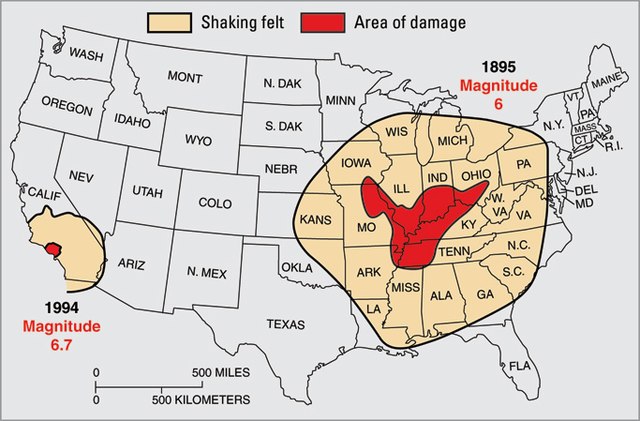1994 Northridge earthquake
The 1994 Northridge earthquake was a moment magnitude 6.7, blind thrust earthquake that occurred on January 17, 1994, at 4:30:55 a.m. PST in the San Fernando Valley region of the City of Los Angeles.
The quake had a duration of approximately 10–20 seconds, and its peak ground acceleration of 1.82 g was the highest ever instrumentally recorded in an urban area in North America. Shaking was felt as far away as San Diego, Turlock, Las Vegas, Richfield, Phoenix, and Ensenada. The peak ground velocity at the Rinaldi Receiving Station was 183 cm/s, the fastest ever recorded.
Collapse of the Golden State Freeway
Building damage in Santa Monica, California
Kaiser Permanente building in Granada Hills
Apartment building that collapsed onto its own footprint, crushing cars parked beneath it
Seismic magnitude scales are used to describe the overall strength or "size" of an earthquake. These are distinguished from seismic intensity scales that categorize the intensity or severity of ground shaking (quaking) caused by an earthquake at a given location. Magnitudes are usually determined from measurements of an earthquake's seismic waves as recorded on a seismogram. Magnitude scales vary based on what aspect of the seismic waves are measured and how they are measured. Different magnitude scales are necessary because of differences in earthquakes, the information available, and the purposes for which the magnitudes are used.
Differences in the crust underlying North America east of the Rocky Mountains makes that area more sensitive to earthquakes. Shown here: the 1895 New Madrid earthquake, M ~6, was felt through most of the central U.S., while the 1994 Northridge quake, though almost ten times stronger at M 6.7, was felt only in southern California. From USGS Fact Sheet 017–03.





